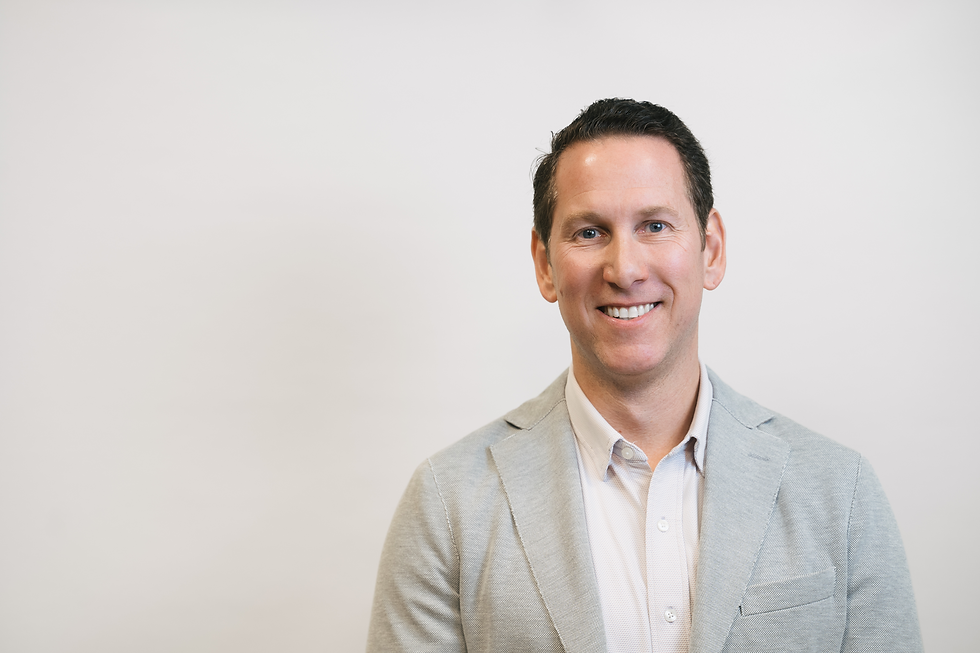Brad Weisberg is the Founder and CEO at Snapsheet, providing claims processing software to companies of all sizes. Brad was interviewed by Andrew Daniels, Co-Founder and President at CrashBay and Founder and Managing Director at InsurTech Ohio.

Brad, what are some of the headwinds that carriers are facing?
“Carriers are facing a lot of headwinds right now between inflation, the expectation of the consumer and the speed at which technology is changing our lives. Combined ratios have also been over a hundred percent for the last few years as carriers haven't been able to increase rates, so their operating models are broken. It's a big challenge when you're working with a 30 to 40-year-old technology platform as your operating system. You're not able to make changes or be as nimble as you'd like.
Carriers have massive headwinds everywhere they look, and it's a really challenging market for them. At the same time, this creates a ton of opportunity for companies to come in and support these carriers in their journey to become better businesses. Whether it's leveraging different AI or ML models and underwriting fraud or claims or helping reduce loss adjustment expenses (LAE), there's a lot of opportunity to support carriers and help solve these problems. It's a really exciting time to be in the industry.”
What are some of the trends you are seeing in the claims space, and how are carriers more effectively managing claims now?
“Trends are changing. Every year I attend ITC, there’s always the latest buzzword plastered all over the place. Whether it's data, fraud prevention, automation, machine learning, visual recognition, etc. Today, the buzzword is ‘Generative AI’. They all serve a purpose, and if you can integrate some of these solutions into your business over time, you can absolutely see material changes to your underwriting models, profitability profile and loss adjustment expense.
If you just look at the industry over the last 20 to 30 years, carriers would differentiate themselves by their people and processes. Everything was manual, done in person or over the phone. Today people want to do things on their own time, and they want their information at their fingertips. So, by leveraging platforms, you're able to automate away a lot of the customer communications by phone. You're able to use technology to lower cycle time, control costs and increase customer experience, all with a variable cost structure.
Carriers have more control over their operations by partnering with platforms that give them data in real time and insights into their business, allowing them to change their workflows in real time and make better business decisions. Leveraging new platforms today that are configurable creates powerful tools for carriers.”
How have you seen companies effectively operationalize AI?
“I've seen success using AI, underwriting and claims communication and claims prevention. There are a lot of great point solutions out there, but it's not easy to integrate into a carrier's workflow. Effective and successful partnerships don't start with a hammer looking for a nail. It comes down to a carrier having a pain point and you being able to serve that need without changing the whole organization.
The most successful partnerships that create a true ROI come when both sides understand what they're trying to accomplish and achieve, and there are very clear objectives to the pilot. You have to understand both sides are not perfect, and the carrier isn't looking for ways for the partnership to fail. They're looking for ways for the partnership to be successful no matter what. There will be hiccups along the way, but as long as you're both transparent and working together, there isn't anything you can't overcome with the technology that's readily available. It's about working together to build and find the right solution.”
What gaps still need filled in the industry, and what holds carriers back from adoption?
“I don't know that I necessarily see gaps or places that need more technology. I think there's definitely been a shift in how carriers think about working with companies like ours and others. Carriers are doing a great job of partnering with technology companies, and they've come around to understanding they don't have to build everything themselves. Having strong partnerships in place that are not part of their core competency can create a much better result, allowing the carriers to focus on what they do best, which is underwriting and acquiring new customers.
It's much harder than most people think to get a carrier to adopt new technology. Many of them are working on old legacy systems where they need a system integrator to make changes to their tech, which could cost hundreds of thousands or millions of dollars and could typically take six months to a year to get implemented. Couple that with years of technical debt they're digging out of, and they only have so much time, budget and resources every year. You have to bring something that has a true ROI to even get a meeting.
Insurance carriers are inherently risk averse, and that's what the industry is. You have to find a way to be able to show your company's value through a POC or a pilot that doesn't disrupt their daily work. With that, it's a blessing and a curse because if you can get in, it's hard to get out. Essentially, the technology is part of your moat. The challenge is having the patience as a startup or as a new organization and jumping through all of the hoops and meetings to get to where you can take your shot and prove the value of your technology.”













